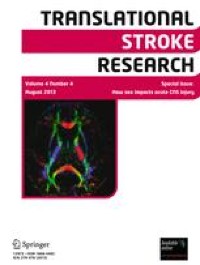|
Αρχειοθήκη ιστολογίου
-
►
2023
(138)
- ► Φεβρουαρίου (74)
- ► Ιανουαρίου (64)
-
►
2022
(849)
- ► Δεκεμβρίου (61)
- ► Σεπτεμβρίου (74)
- ► Φεβρουαρίου (65)
-
▼
2021
(2936)
- ► Δεκεμβρίου (59)
- ► Σεπτεμβρίου (180)
- ► Φεβρουαρίου (325)
-
▼
Ιανουαρίου
(305)
-
▼
Ιαν 10
(17)
- Optimal Rex shunt procedures as a treatment for pe...
- Usefulness of laparoscopic surgery and preoperativ...
- Serrated precancerous colorectal lesions
- Increased perioperative mortality for femoral neck...
- The safety of early versus late ileostomy reversal...
- Experimental evaluation of the fineness of needle ...
- In vitro antileishmanial potentialities of essenti...
- Attenuation of the Induction of TLRs 2 and 4 Mitig...
- Impact of elevated core temperature on cognition i...
- Hypoxic re-exposure retains hematological but not ...
- Comparative Efficacy of Oral Calcitonin-Gene–Relat...
- An Oral-mucosa-on-a-chip sensitively evaluates cel...
- Comparison of universal screening in major lynch-a...
- ACE-2-interacting Domain of SARS-CoV-2 (AIDS) Pept...
- Prevalence and predictors of small intestinal bact...
- The association of the progression of knee osteoar...
- Standardized framework to report on the role of sl...
-
▼
Ιαν 10
(17)
-
►
2020
(1624)
- ► Δεκεμβρίου (293)
- ► Σεπτεμβρίου (234)
- ► Φεβρουαρίου (28)
-
►
2019
(13362)
- ► Δεκεμβρίου (19)
- ► Σεπτεμβρίου (54)
- ► Φεβρουαρίου (5586)
- ► Ιανουαρίου (5696)
-
►
2018
(66471)
- ► Δεκεμβρίου (5242)
- ► Σεπτεμβρίου (5478)
- ► Φεβρουαρίου (4835)
- ► Ιανουαρίου (5592)
-
►
2017
(44259)
- ► Δεκεμβρίου (5110)
- ► Σεπτεμβρίου (5105)
-
►
2016
(7467)
- ► Δεκεμβρίου (514)
- ► Σεπτεμβρίου (1038)
- ► Φεβρουαρίου (793)
Αναζήτηση αυτού του ιστολογίου
Κυριακή 10 Ιανουαρίου 2021
Optimal Rex shunt procedures as a treatment for pediatric extrahepatic portal hypertension
Usefulness of laparoscopic surgery and preoperative examinations for chronic recurrent small bowel obstruction
|
Serrated precancerous colorectal lesions
|
Increased perioperative mortality for femoral neck fractures
|
The safety of early versus late ileostomy reversal after low anterior rectal resection
|
Experimental evaluation of the fineness of needle forceps: advantages other than minimal access
|
In vitro antileishmanial potentialities of essential oils from Citrus limon and Pistacia lentiscus harvested in Tunisia
|
Attenuation of the Induction of TLRs 2 and 4 Mitigates Inflammation and Promotes Neurological Recovery After Focal Cerebral Ischemia
|
Impact of elevated core temperature on cognition in hot environments
|
Hypoxic re-exposure retains hematological but not performance adaptations post-altitude training
|
Comparative Efficacy of Oral Calcitonin-Gene–Related Peptide Antagonists for the Treatment of Acute Migraine: Updated Meta-analysis
|
-
This protocol presents an in vitro live-imaging phagocytosis assay to measure the phagocytic capacity of astrocytes. Purified rat astrocyt...
-
Association française pour l'étude du cancer [Imatinib in the treatment of chronic myeloid leukemia in Morocco]. Related Articles [Im...
-
A Case of Miller Fisher Syndrome Due to the Use of Cemiplimab : No abstract available Miller Fisher syndrome is a rare, acquired n...






